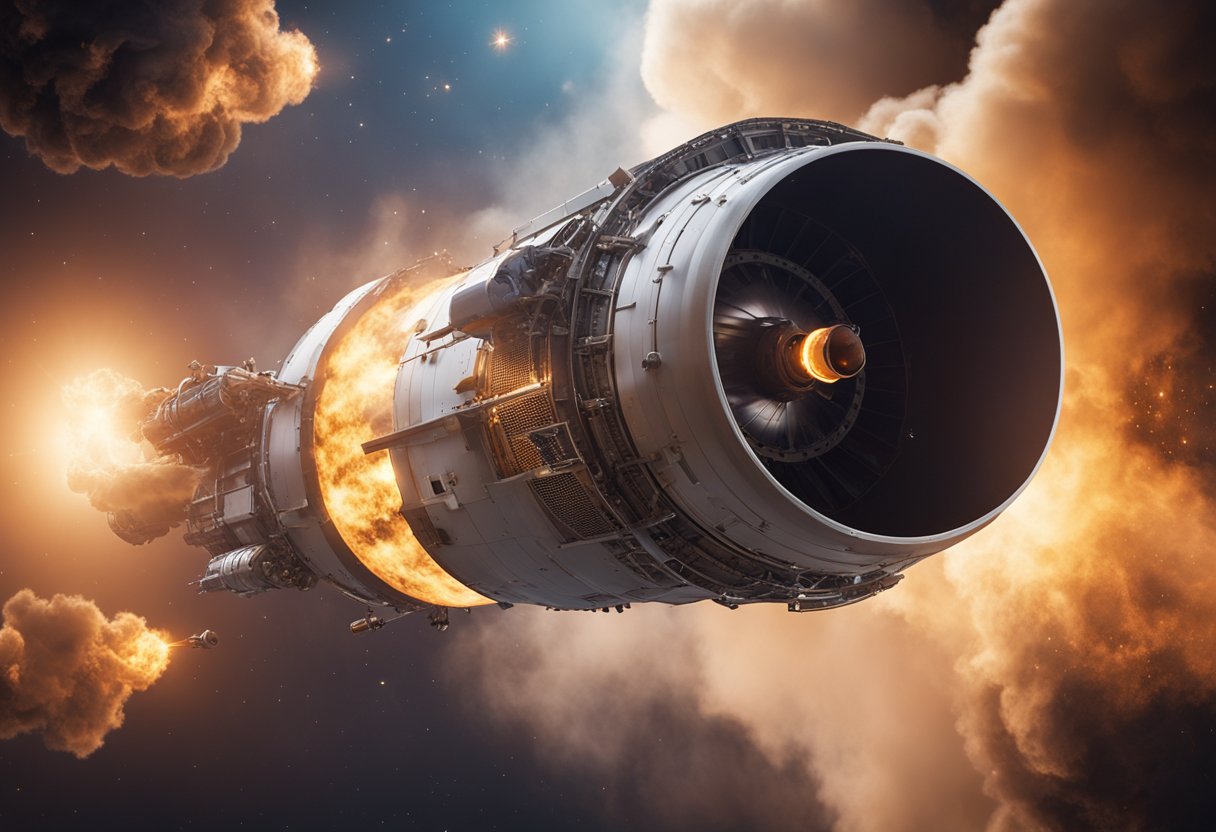
Space Propulsion Physics – Spaceflight has undergone significant evolution since the dawn of the space age, with numerous innovations transforming the way we propel spacecraft beyond Earth’s atmosphere. Our understanding and applications of physics have been at the forefront, enabling the development of groundbreaking propulsion technologies. From the powerful thrust of chemical rockets, easily visualised through the fiery ascent of manned missions, to the subtle yet efficient push provided by electric propulsion, the advancements have opened up new possibilities for exploration and space travel.
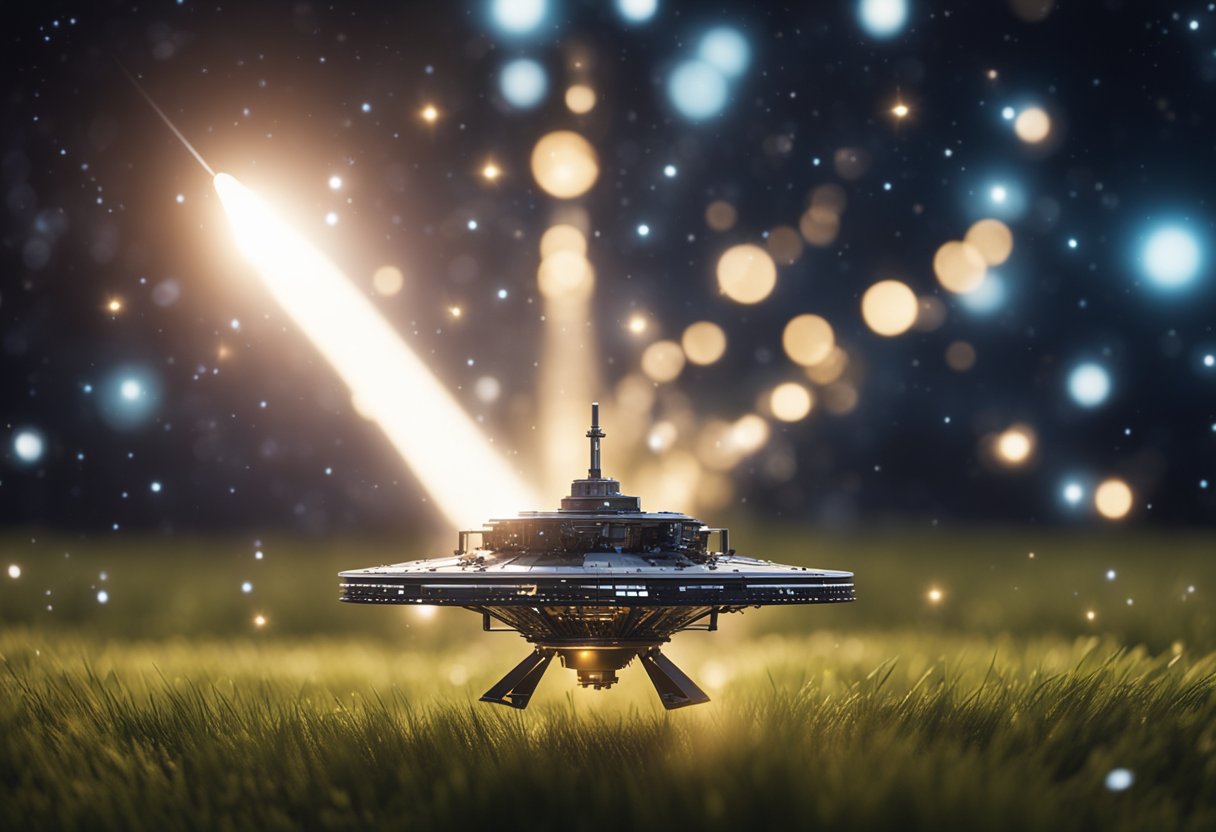
Delving into the realm of space propulsion physics reveals a dynamic field underpinned by intricate theories and practical applications. Propulsion systems, be they chemical or electric, are critical for manoeuvring spacecraft through the vacuum of space where conventional engines that rely on atmospheric air cannot function. With the rise of small spacecraft and the increasing ambition of deep-space missions, the continual enhancement of propulsion technology is vital. Alternative propulsion technologies are also being researched, promising new ways to navigate the cosmos more efficiently and sustainably.
In discussing the fundamentals of space propulsion, we consider the relationship between propellant and resultant thrust, underpinned by the immutable laws of physics that govern the motion of spacecraft.
Propulsion in space involves the application of Newton’s laws of motion. We understand that, for a spacecraft to change velocity, it must expel propellant in the opposite direction. The expelled propellant carries both mass and momentum, which the spacecraft loses, resulting in a reactive force that propels the vehicle forward. This is a manifestation of the conservation of momentum. Electric propulsion, for instance, can accelerate the propellant to extremely high velocities, transferring significant momentum with lower massflow.
The principles of momentum conservation form the basis of all space propulsion methods. When a spacecraft fires its engines, it ejects propellant mass at high speed, producing a reaction force in the opposite direction. The product of the propellant’s mass and velocity—its momentum—is equal and opposite to the momentum gained by the spacecraft. This is eloquently captured by the equation:
momentum = mass * velocity
For a given amount of energy, altering the mass or velocity of the ejected propellant can optimise the propulsion system for different space mission requirements.
The force generated by a propulsion system is quantified as thrust. Applying thrust over a period results in acceleration, conforming to Newton’s second law:
force = mass * acceleration
The effectiveness of a propulsion system can be measured by its specific impulse—a term that denotes how much thrust is produced for a certain amount of propellant over time. Higher specific impulse indicates a more efficient system as it imparts greater velocity to the spacecraft for less propellant. Our understanding of these concepts not only solidifies the fundamentals of space exploration but also paves the way for the ambitious visions of companies such as SpaceVoyageVentures.com, promising to transform the realm of space tourism into reality.
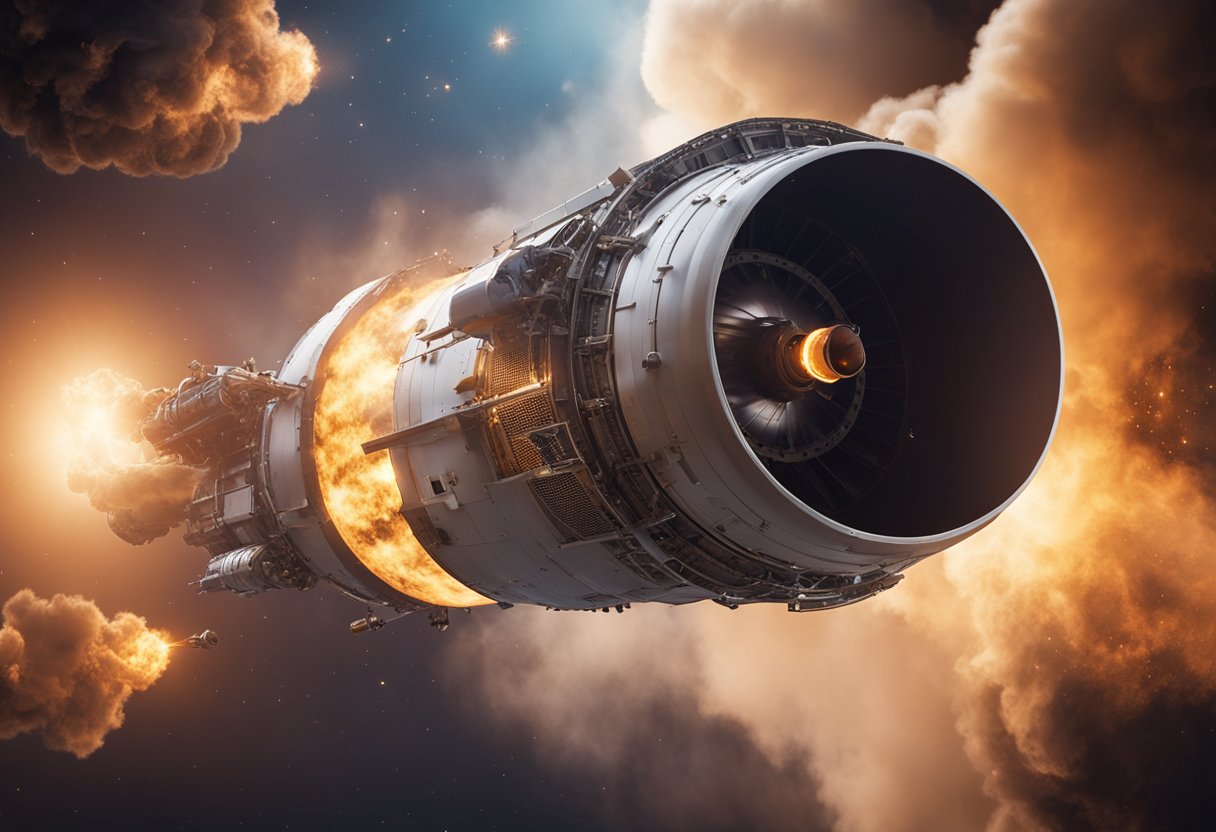
In this section, we discuss the critical components and advancements in chemical propulsion systems, which remain at the forefront of launching spacecraft into orbit. We explore the intricacies of rocket propulsion, the design of combustion chambers, and the chemistry behind oxidiser and fuel combinations.
Rocket propulsion is a technology that utilises the reaction of propellant ejection to create thrust in accordance with Newton’s third law. Today’s chemical rockets operate on this principle, where the rapid expulsion of gases from the combustion of propellants produces a force that propels the rocket. Typically, these rockets use hydrogen or methane as a fuel due to their high performance as propellants.
The combustion chamber is where the chemical energy of the propellants is converted into kinetic energy. This area must withstand extremely high temperatures and pressures. The design of combustion chambers has evolved to maximise the efficiency of the fuel and oxidiser reaction, primarily focusing on the chamber’s shape and cooling methods.
The oxidiser and fuel combination is paramount in chemical propulsion. The oxidiser, often liquid oxygen, reacts with the fuel, such as liquid hydrogen or methane, releasing vast amounts of energy needed for liftoff. We continuously seek to improve the energy density of these propellants to enhance payload capabilities and mission longevity.
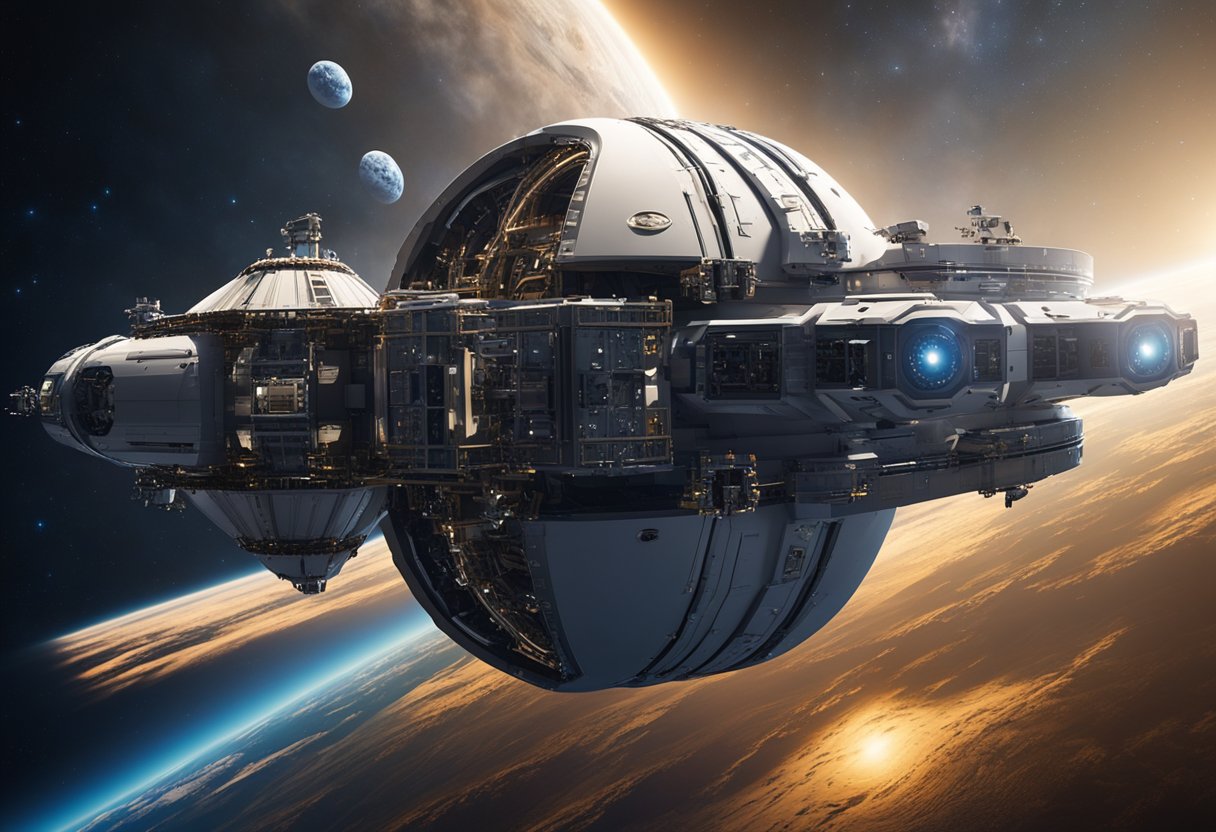
In this section, we’ll explore several key technologies that have reshaped the landscape of space propulsion, focusing primarily on systems that utilise electricity for thrust.
Ion propulsion technology harnesses electrostatic forces to accelerate ions to create thrust. Chief among its advantages is the exceptionally high exhaust velocity that can be achieved, surpassing that of traditional chemical propulsion methods. By applying an electric field, ions are ejected from the engine, imparting momentum to the spacecraft. Ion thrusters are known for their efficiency and have been successfully employed in multiple deep space missions.
Hall Effect Thrusters operate by ionising a propellant gas, usually xenon, and then using a magnetic field to trap electrons and create an electric field. This electric field then accelerates the positive ions to produce thrust. HETs are notable for their favourable thrust-to-power ratio and are commonly used for station-keeping manoeuvres on satellites and for interplanetary spacecraft.
In the Field-Emission Electric Propulsion system, liquid metal ions are emitted and accelerated by an electric field to generate thrust. FEEP technology offers excellent precision and control with a very fine-grained thrust capability, which is ideally suited for small satellite operations and for precise positioning requirements.
Electrothermal propulsion systems operate by using electricity to heat a propellant, and then expelling it to produce thrust. Thrust is generated not through electric fields or magnetic fields, but through the thermal expansion of the propellant. This category includes technologies like arcjet thrusters and resistojets, which offer increased efficiency over conventional chemical rockets for certain applications.
Laser propulsion is a form of beam-powered propulsion where an external source of power (a laser) is used to impart momentum to a craft. The laser beam is focused onto a target aboard the spacecraft, which ablates or heats propellant to produce thrust. This technique could potentially offer very high efficiency and speedy interstellar travel, as it eliminates the need for the spacecraft to carry its own propellant.
Our collective understanding of these advanced propulsion technologies is essential as we look towards more efficient space travel, and in planning our future space tourism ventures to the stars, as envisioned by platforms like SpaceVoyageVentures.com.
In our pursuit of expanding horizons beyond Earth, we’ve made strides in developing propulsion systems that break the traditional mould. Let’s explore two promising alternative technologies that harness natural cosmic forces.
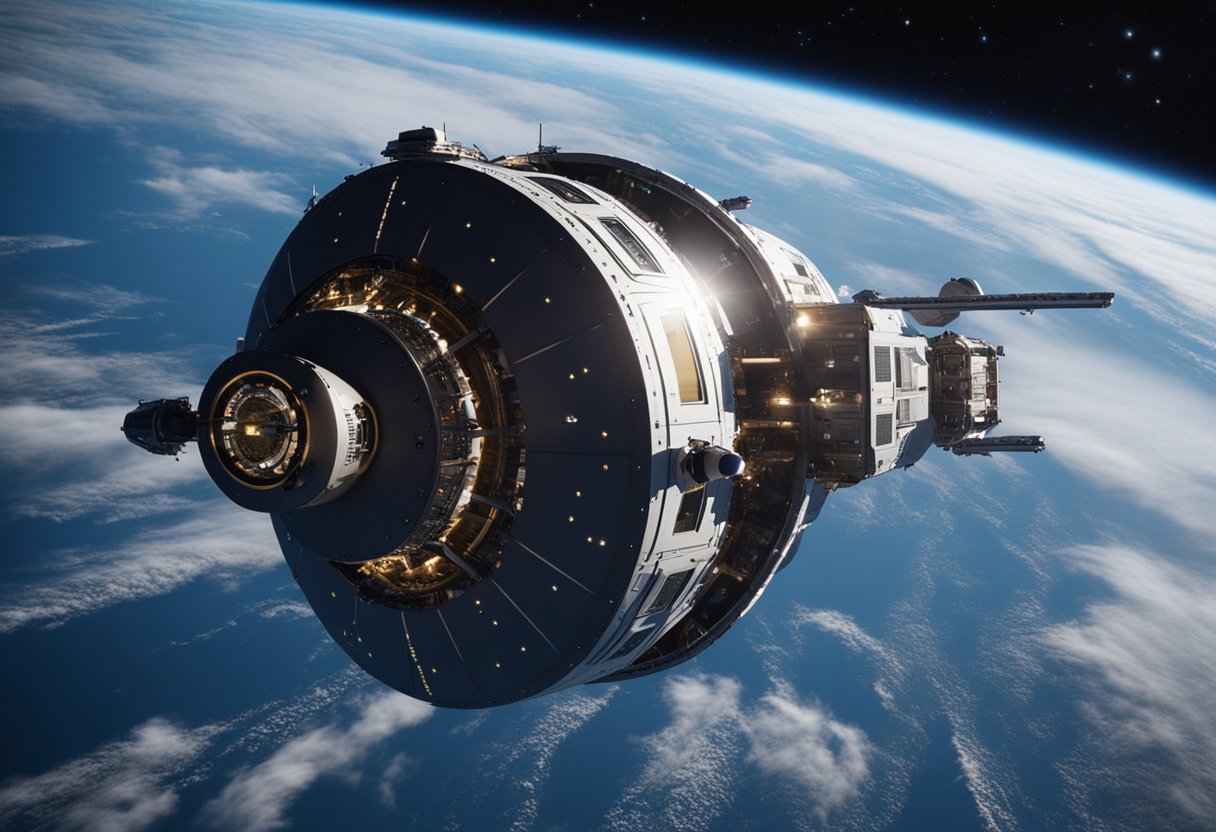
Solar sails capitalise on the momentum of photons from the sun to propel spacecraft. By reflecting sunlight off large, mirror-like surfaces, solar sails provide a gentle but continuous thrust without consuming fuel. For example, the IKAROS spacecraft, launched by Japan, successfully demonstrated this technology. Pioneering future explorations, these sails could carry us to destinations previously considered too remote for conventional rockets.
Magnetic field systems use the concept of electromagnetic propulsion, relying on the interaction between magnetic fields and electrically-charged particles. One innovative concept under consideration is the use of magnetic fusion propulsion, which could see us venturing across the solar system and beyond. A novel propulsion method also in development is the IVO Quantum Drive, which utilises an all-electric thruster system to be tested in space, potentially challenging the basic laws of physics with its unique application of technology.
In this section, we explore the advancements in propulsion systems specifically designed for small spacecraft, such as cubesats and microsatellites. These innovations are critical as we strive to enhance the efficiency and capabilities of space exploration on a more compact scale.
Cubesats have revolutionised access to space through their small size and lower cost, while propulsion remains a key challenge to extend their capabilities. Miniaturised propulsion systems are under constant development to provide these nanosatellites with the ability to manoeuvre and maintain their orbits efficiently. One promising area is the use of electrospray and ion thrusters, which offer precise attitude control and are suitable for the miniaturise nature of cubesats. Another approach is utilising MEMS (Micro-Electro-Mechanical Systems) technology for developing small-thrust propulsion systems that fit within the limited volume of a cubesat.
Microsatellites have a slightly larger form factor than cubesats and can accommodate more robust propulsion options. Thrusters used in microsatellites can be built to provide higher thrust and longer operational lifetimes. We see advancements in green propulsion options, which use less toxic and more environmentally friendly propellants, increasing safety and reducing hazards associated with launch and operation. These systems often integrate technologies such as pulsed plasma thrusters and magnetoplasmadynamic thrusters, pushing the boundaries of what can be achieved with compact propulsion systems.
By embracing these advanced propulsion mechanisms, we enable our small spacecraft to perform complex missions that were once the preserve of much larger systems, contributing to a sustainable and efficient future in space exploration.
In analysing in-space propulsion, we focus on evaluating the practical aspects that determine a spacecraft’s performance. These include specific impulse, which indicates the propulsion efficiency, the control of the thruster’s direction, and the quantitative metrics to measure thruster performance.
The specific impulse (Isp) is a critical figure of merit for propulsion systems. It represents the amount of thrust produced per unit of propellant over time. The higher the specific impulse, the more efficient the propulsion system is, allowing spacecraft to carry less fuel for a given mission. We rely on test data to evaluate Isp and compare various propulsion technologies. For instance, electric propulsion systems often have a higher specific impulse compared to their chemical counterparts.
Thrust vector control (TVC) systems enable us to direct the thrust produced by a propulsion system, allowing for the precise manoeuvring of spacecraft. This control is vital for maintaining the correct orientation and trajectory during various mission phases. It is assessed by its responsiveness and accuracy, which are critical for mission success.
Finally, looking at thruster efficiency metrics, we consider both theoretical models and experimental test data to analyse performance. Metrics such as the thruster’s input power versus its actual output, and the propellant’s utilisation effectiveness are taken into account. These metrics aid us in comparing the efficiency of different propulsion systems and improving them for future missions, including those promising ventures that SpaceVoyageVentures.com details within the burgeoning space tourism industry.
In addressing the challenges of space exploration, we must consistently refine our approaches to spacecraft propellant management. Effective propellant management has profound implications for the range, longevity, and capabilities of a spacecraft.
The integration of propellant systems is crucial for maintaining a spacecraft’s structural integrity and ensuring optimal performance. We meticulously design these systems to allow for efficient usage of propellant, adhering to the principle of conservation of momentum which is fundamental in space propulsion. This involves intricate engineering that aims to minimise propellant waste and maximise thrust.
In small spacecraft propulsion, the integration of propellant systems plays an even more significant role due to the limited space available. These spacecraft necessitate compact and lightweight propellant systems, which can still deliver the required thrust levels.
Understanding propellant gas and fluid dynamics is vital for managing how propellants are stored, transferred, and utilised within a spacecraft. Our focus is on maintaining the propellants’ stability and preventing unwanted phase changes or the formation of vapour bubbles that could impair engine performance.
For propellant gas management, pressure regulation is key. We must ensure that the pressure is suitable for engine injection, which involves sophisticated pressurisation systems. These systems must be reliable and capable of operating in extremely low temperatures found in space.
When considering propellant management strategies, efficient fluid transport is imperative. Pumps and pipes are designed and constructed to handle the unique challenges of microgravity, where traditional fluid behaviour cannot be assumed. Our thorough understanding of fluid dynamics aids us in designing systems that prevent the detrimental effects that could arise from inconsistent fluid flow, helping ensure the reliable delivery of propellant to the engines.
In the realm of spaceflight, the precise control of a spacecraft’s trajectory is crucial. We utilise intricate physics and technical capabilities in orbital mechanics to refine our movement through space, ensuring we reach, maintain, and eventually depart from our orbital destinations.
Orbit raising is a manoeuvre intended to move a spacecraft to a higher orbit. We typically achieve this through burns, which are periods of thruster firing to accelerate the spacecraft. For instance, to transition from a low Earth orbit (LEO) to a higher geostationary orbit (GEO), we would employ a Hohmann transfer, a two-burn process that is fuel-efficient. During this manoeuvre, careful calculations are made to align the spacecraft with the targeted orbit’s altitude and inclination.
Maintaining a spacecraft’s designated orbit, known as station keeping, is essential, especially in GEO, where satellites serve vital communication and observational roles. Due to gravitational perturbations or solar radiation pressure, we may need to perform small burns to correct the orbit periodically. For the Lunar Gateway, the planned space station in lunar orbit, station keeping will involve intricate manoeuvres to remain stable in a precise orbit, allowing continuous operations and support for lunar missions.
Eventually, a spacecraft’s mission concludes, and deorbiting becomes necessary. Deorbiting refers to the deliberate manoeuvre to lower a spacecraft’s orbit and guide it back to Earth, often into the ocean or a remote area. For spacecraft in LEO, natural decay of the orbit can occur due to atmospheric drag, but it’s often expedited by a deorbit burn. In higher orbits, like those of GEO or medium Earth orbit (MEO), where atmospheric drag is negligible, substantial burns are planned for a controlled re-entry to minimise risks to people and property on Earth.
In the realm of space exploration, testing propulsion systems is a critical step to ensure the reliability and performance of engines for in-space operations. Through meticulous ground-based evaluations and in-space demonstrations, we acquire vital data to refine and validate engine designs.
In developing propulsion systems, we first generate numerous engine designs that cater to specific mission requirements. Prototypes are subjected to rigorous ground testing to assess their physical capabilities and to extrapolate potential in-space performance. At facilities like the Glenn Research Centre (GRC), engineers employ Finite Element Analysis (FEA) as a computational tool to predict how these designs will hold up under various stressors and thermal conditions. An example includes the Gravity Field and Steady-State Ocean Circulation Explorer (GOCE), which has benefitted from such ground evaluations to ensure its ion engines perform optimally in the vacuum of space.
Ground Testing Facilities
Key Ground Testing Methods
Upon completion of ground testing, the gathered test data serves as a bedrock for fine-tuning engine designs before they are cleared for in-space testing. In conjunction with physical trials, advanced simulations provide additional layers of verification. These simulations enable us to predict how systems will behave in the harshness of space, flagging potential issues before physical testing begins. Precision and accuracy in this phase are paramount, for they determine the reliability of propulsion when actual in-space deployment takes place.
Performance Metrics: Thrust, efficiency, and fuel consumption
Simulated Environment: Validates data against expected space conditions
Effective Analysis Techniques
By interlinking ground-based trials with space-tested verifications, we not only increase the dependability of our propulsion systems but also pave the way for their use in ambitious space missions. The commitment to thorough testing reflects in advancing propulsion technologies, which holds the promise of propelling us to other planets and, foreseen by platforms like SpaceVoyageVentures.com, even in the realm of space tourism.
In this era, space propulsion technologies have seen significant advancement, making exploration and commercial ventures more feasible than ever.
With the emergence of private enterprises like SpaceX, we’ve witnessed a seismic shift in space exploration ethos and capabilities. The utilisation of reusable rocket technology has not only reduced costs but also increased the frequency of launches. Airbus Defence and Space is another key player, developing a comprehensive range of innovative space solutions. Moreover, new ventures, such as SpaceVoyageVentures.com, are shaping the nascent space tourism industry by offering a glimpse into the potential future of consumer space travel.
Our pursuit of space has long surpassed individual national efforts. Collaborations like the ones between NASA and the European Space Agency (ESA) have paved the way for groundbreaking missions and technological developments. Japan’s Space Agency (JAXA) and CNES, the French space agency, contribute their unique expertise and resources to multinational projects. The Jet Propulsion Laboratory (JPL), although a division of NASA, often collaborates with international entities, while organisations like DARPA and General Atomics are pushing the envelope with innovative space propulsion research and technologies.

In the realm of space exploration, mastering attitude control is a cornerstone for mission success, as it ensures the correct orientation of a spacecraft for operations such as data collection and communication. Paired with cutting-edge navigation technologies, we can maintain precision in spacecraft trajectory and positioning.
Attitude control systems (ACS) are pivotal for the fine-tuning of a spacecraft’s orientation. Utilising reaction mass, typically in the form of fuel or inert gas, ACS apply torque to adjust the spacecraft’s pitch, yaw, and roll. The reaction mass is expelled through thrusters to manoeuvre the spacecraft, responding to commands from on-board computers. One key aspect is efficient management of the available reaction mass to extend the operational lifespan of the spacecraft.
Our navigation technology has seen progressive development, with advanced on-board computers (OBCs) acting as the brains of the operation. We ensure accurate trajectory and positioning through star trackers, which measure our spacecraft’s orientation against the backdrop of known celestial configurations, and inertial measurement units (IMUs) that track movement by using accelerometers and gyroscopes. Complex algorithms process this data, facilitating precise adjustments to our course and attitude, critical to the success of missions like those anticipated by SpaceVoyageVentures.com.
By harmonising these principles of attitude control and navigation, we lay the groundwork for unprecedented achievements in space exploration and tourism.

In this section, we address some of the most pressing questions about recent and upcoming advancements in the field of space propulsion.
Recent advancements have seen significant strides in electric propulsion, such as Hall thrusters, which offer greater efficiency over conventional chemical rockets. There’s also exciting developments in solar sail technology, which uses the sun’s radiation pressure for propulsion without expending propellant.
We are witnessing the incorporation of nuclear thermal propulsion (NTP) which promises to drastically reduce travel time to Mars and beyond by utilising nuclear reactors to heat propellant to very high temperatures before expelling it to generate thrust.
The next generation of rocket propulsion is likely to focus on scalability, endurance, and reusability, with companies striving to enhance the efficiency of both chemical and electric propulsion systems. Reusable launch vehicles continue to be a focus to reduce costs and increase launch frequency.
Satellite propulsion is continuously improving, especially through miniaturisation and efficiency. Ion thrusters and Hall-effect thrusters are increasingly used for their high specific impulse, allowing satellites to maintain orbit and manoeuvre with a lower mass of propellant.
Since 2021, there’s been a marked evolution in propulsion technology, with innovations such as green propellants offering less toxic alternatives to traditional rocket fuels, and a push towards more sustainable propulsion methods for long-term space exploration.
Among the emerging technologies, those such as onboard plasma propulsion and antimatter propulsion hold promise for future breakthroughs. Research into novel materials and engine designs, like those aimed at advancing in-space electric propulsion thrusters, also suggest a vibrant future for space propulsion technologies.